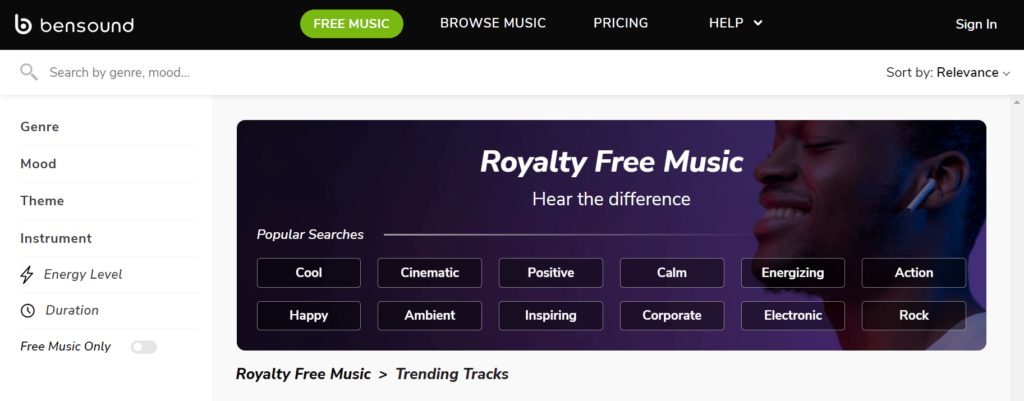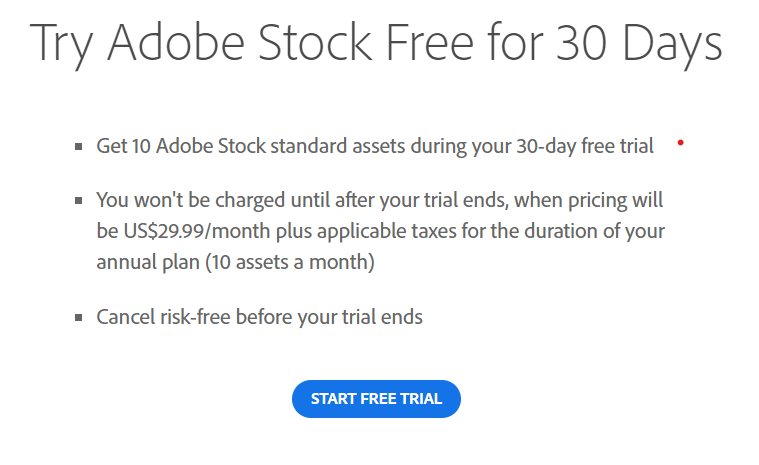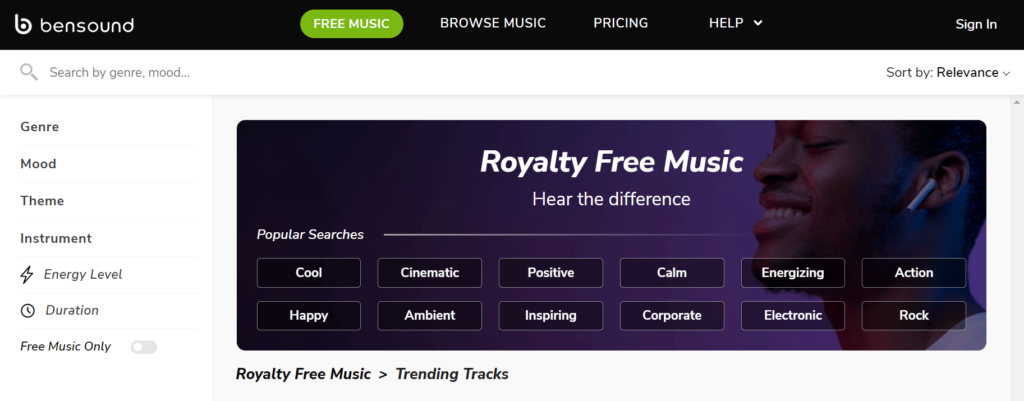That photo at the top of this blog? It’s a stock image from Adobe. I didn’t take the photo, and I don’t know this woman (though I’m sure she’s a wonderful human). In the stock photo bank, the image is called “Happy successful young businesswoman working on laptop.” Cool. That works for what I need. If you create presentations or blogs or videos or websites regularly, you’ve probably been faced with this choice: Use stock elements, or not?
It’s a legitimate question, with valid points on both sides of the issue. Which means it can be tough deciding whether to use that royalty-free audio clip or that open-source image. So on our blog today and next Tuesday, we’ll be looking at both the pros and cons of using stock elements. The pros, which we’ll cover today, include saving time, saving money, having lots of choices, and getting great quality elements. In addition, we’ll cover some of our favorite places to go shopping for stock elements.
You save time.
This is pretty much a given, right? Using stock elements allows you to save the time you would otherwise spend creating them or sourcing them. And it’s super simple. Just go to your favorite stock library, enter what you are looking for, and select the option that works best for your presentation. Many open source options provide great filters too. Most image banks let you filter by color, occasion, type of image (photo, illustration, etc.), and more. Bensound lets you filter their music clips by mood or occasion as shown below.
 So when you can hop online and find what you are looking for in a matter of minutes, why not?
So when you can hop online and find what you are looking for in a matter of minutes, why not?
You save money.
Another reason stock elements can be great options is that they save you money. It costs money to hire a professional graphic designer, photographer, or musician. So if you can take advantage of open source material, you keep that cash in your pocket.
Granted, most online stock banks have tiers of material. That means you can access free stock material without paying anything. Or you can pay a minimal one-time fee or monthly subscription and get access to a larger database of stock elements. And at the top tier, you can pay to own or have license rights to some content, meaning it belongs to you and others can’t use it. There are benefits and drawbacks at every level. Check out more about this in our blog Tuesday on the cons of using stock elements.
You have a large selection from which to choose.
If you hire a graphic designer, they may produce a handful of options for you, but what if you don’t like anything they come up with? Pulling from stock element banks means you have literally millions of options. And the choice is yours. For example, Alamy boasts over “80 million images” from “over 40,000 photographers and 600 photo agencies around the world.” Surely at least one of those 80 million images will work for your presentation, right?
You get professional-quality elements.
The creatives who offer their open source content online are professionals in what they do. So the level of the content that they produce is almost always going to be better than what someone in another field can throw together. We’re not saying you can’t take a great photo or produce a killer EDM track on your Garage Band app, but who has extra time for that? Especially when trying to create a powerful slide deck for an upcoming presentation. So why not rely on the experts who do this stuff all the time to produce quality content out of years of experience?
Some Stock Element Banks Worth Checking Out
While a good ol’ Google image search can pull back some interesting finds, it’s not necessarily the best place to go hunting for stock elements to use in your presentation. For one, the uploaded resolution size of many of those images is small. That means the image might look great when it’s a small thumbnail on your laptop or phone, but when you put that on a large presentation screen, you’re likely to end up with pixelated and fuzzy pictures. So check out these resources instead.
For Music:
Bensound
Uppbeat
Envato Elements
For Photos/Graphics:
Unsplash
iStock
Pexels
Adobe Stock (subscription required)
 For Presentation Templates:
For Presentation Templates:
Canva
Envato Elements
Beautiful.ai. (subscription required)
There are some really good reasons to use stock elements in your presentation design. Like I said, we sometimes use them for our blog images. However, there are also some cons when it comes to including open-source material in your presentations. We’ll cover those this coming Tuesday so that you’ve got all the info you need to make the decision for yourself.
For now, take a few minutes to look through our presentation portfolio. Or reach out to us about how we can help you take your presentation to the next level.
The post The Pros of Using Stock Elements in Your Presentation appeared first on Ethos3 – A Presentation Training and Design Agency.
Looking For Powerpoint Design Agency?
Call Pursho @ 0731-6725516
Telegram Group One Must Follow :
For Startups: https://t.me/daily_business_reads
#Pros #Stock #Elements #Presentation






